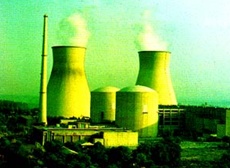India to put 14 nuclear facilities under IAEA safeguards by year-end
30 Jun 2014
India will open 14 of its civilian nuclear facilities, including the Narora Atomic Power Station (NAPS) Unit I and II, to International Atomic Energy Agency safeguards by the end of 2014, as part of a commitment made under the India-US nuclear deal.
 The 220 MW Pressurised Heavy Water Reactors (PHWR) in Bulandshahr district of Uttar Pradesh - NAPS I commissioned in January 1991 and NAPS II became operational in July 1992 – will be brought under IAEA safeguards by the year-end.
The 220 MW Pressurised Heavy Water Reactors (PHWR) in Bulandshahr district of Uttar Pradesh - NAPS I commissioned in January 1991 and NAPS II became operational in July 1992 – will be brought under IAEA safeguards by the year-end.
''NAPS I and II will be brought under IAEA safeguards by the end of the year. This is India's commitment to becoming a responsible nuclear-weapon state.
''More importantly, by complying with all the norms under the India-US nuclear deal, we will also push our case for becoming a member of the coveted 45-member Nuclear Suppliers Group,'' said a government source.
In a communication to IAEA in July 2008, India had listed 14 reactors, which would be brought under IAEA safeguards from 2006 to 2014 as part of the ''Implementation of the India-United States Joint Statement of July 18, 2005.''
India had signed an Additional Protocol with the IAEA on 15 March 2009, which involves a high degree of scrutiny of nuclear facilities, including its reactors and fuel cycle sites, by the inspectors of the atomic energy body.
India has already listed its sites as agreed between the two countries.
These include six facilities - two Uranium Oxide Plants, Ceramic Fuel Fabrication Plant, Enriched Uranium Oxide Plant, enriched fuel fabrication plant and Gadolinia facility - in the Nuclear Fuel Complex in Hyderabad, which were put under safeguards in October, 2009.
Units I and II along with two more facilities - the Away-From-Reactor fuel storage (December, 2012) and Nuclear Material Store (March, 2014) - in Tarapur in Maharashtra, units I-VI of the Rajasthan Atomic Power Station (RAPS), units I and II of Kudankulam Nuclear Power Plant in Tamil Nadu and Kakrapar Atomic Power Station in Gujarat are also under IAEA safeguards. All these reactors were placed under safeguards in October 2009.
India had ratified the Additional Protocol, mandatory under the India-US civilian nuclear cooperation deal.
The move will help facilitate multiple entries for IAEA inspectors for conducting the necessary inspections.
Information about nuclear exports would also be given to IAEA so that cross verification becomes easier.
Meanwhile, the director general of the International Atomic Energy Agency, Yukiya Amano, during a visit to Indian civil nuclear facilities last week praised the country for tightening of laws to check nuclear proliferation.
Speaking to journalists after touring Tarapur Atomic Power Station's units 3 & 4, Amano lauded the ''serious efforts, enthusiasm by the operators, engineers to further improve, further enhance the level of safety.''
On his second visit to India in three years but the first after the Fukushima accident, Amano said the implementation of the India Specific Safeguard Agreement was being implemented ''very smoothly.''







.webp)














